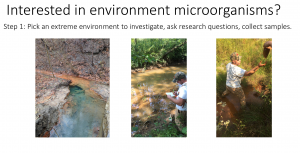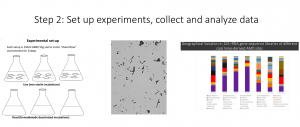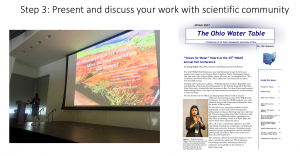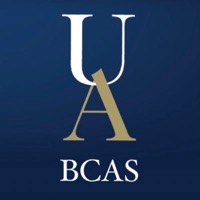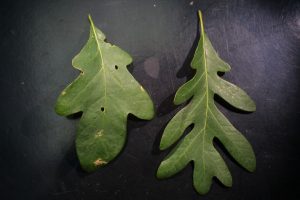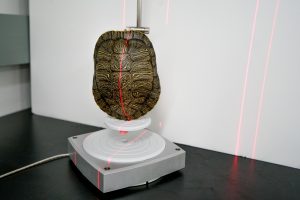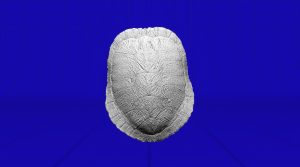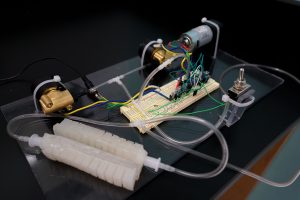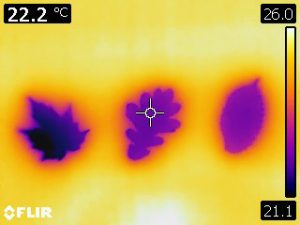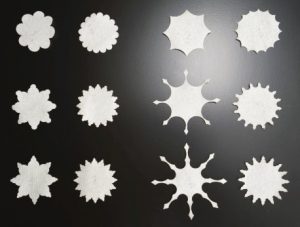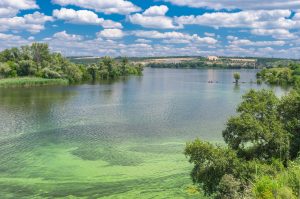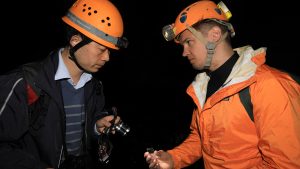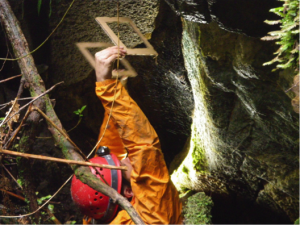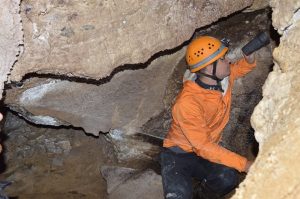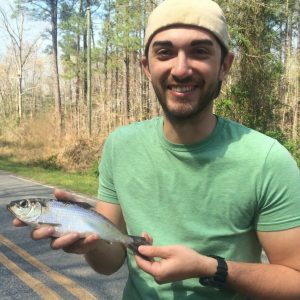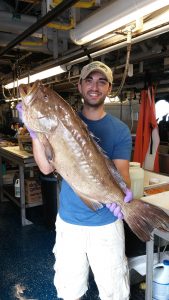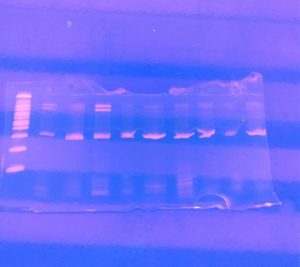[Past Projects]

Research Description
Geckos and anoles are two groups of lizards which possess adhesive toe pads composed of thousands of microscopic hair-like structures (setae) that generate adhesion when placed against a surface. These lizards can be found in a wide variety of habitats, and move about on surfaces with varying levels of roughness. Thus, our labs are interested in understanding how these lizards adhere to rough surfaces, and if the shape/configuration of setae influence adhesion under these conditions. With this, we hope to gain knowledge that can be applied to the design of synthetic adhesives that can stick under a wide array of conditions. Here are some potential projects in development:
- How does setal shape vary across anoles and geckos?
In this project, the setae of various anole and gecko species will be viewed under a scanning electron microscope and physical measurements taken to better understand the variation in setal shape and configuration.
- How does the adhesion of anoles and geckos differ on surfaces of varying roughness?
Here, the adhesion of live geckos and anoles will be measured on surfaces with different degrees of roughness to obtain data on how roughness affects lizard adhesion.
- How does setal shape impact adhesion of lizard-inspired synthetic adhesives?
Synthetic adhesives will be generated with geometries that mimic the setal shape/configuration found in geckos and anoles. The resulting synthetic adhesives will be tested on surfaces with varying roughness to understand how geometry impacts adhesion on rough surfaces.
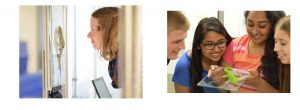
Benefits of this Research Experience
Undergraduate students in the Niewiarowski and Dhinojwala labs will gain an array of critical research skills including: reptile care and handling, live animal performance measurements, experimental design, statistics, microscopy, use of museum collections, surface characterization methods, scientific writing, and more. Additionally, many of the undergraduate students in our labs have been co-authors on several papers published in peer-reviewed journals (see below)!

*Denotes undergraduate student
Niewiarowski, P. H., Lopez, S., Ge, L., Hagan, E.* and Dhinojwala, A. (2008). Sticky gecko feet: the role of temperature and humidity. PLoS. ONE 3, e2192.
Niewiarowski, P. H., Stark, A., McClung, B.*, Chambers, B.* and Sullivan, T.* (2012). Faster but Not Stickier: Invasive House Geckos Can Out-Sprint Resident Mournful Geckos in Moorea, French Polynesia. J. Herpetol. 46, 194-197.
Stark, A. Y., Sullivan, T. W.* and Niewiarowski, P. H. (2012). The effect of surface water and wetting on gecko adhesion. J. Exp. Biol. 215, 3080-6.
Stark, A. Y., Badge, I., Wucinich, N. A.*, Sullivan, T. W.*, Niewiarowski, P. H. and Dhinojwala, A. (2013). Surface wettability plays a significant role in gecko adhesion underwater. Proc Natl Acad Sci U S A 110, 6340-5.
Stark, A. Y., Wucinich, N. A.*, Paoloni, E. L.*, Niewiarowski, P. H. and Dhinojwala, A. (2014). Self-drying: a gecko’s innate ability to remove water from wet toe pads. PLoS ONE 9, e101885.
Stark, A. Y., McClung, B.*, Niewiarowski, P. H. and Dhinojwala, A. (2014). Reduction of water surface tension significantly impacts gecko adhesion underwater. Integr. Comp. Biol 54, 1026-33.
Badge, I., Stark, A. Y., Paoloni, E. L.*, Niewiarowski, P. H. and Dhinojwala, A. (2014). The role of surface chemistry in adhesion and wetting of gecko toe pads. Scientific Reports 4, 6643.
Stark, A. Y., Ohlemacher, J.*, Knight, A.* and Niewiarowski, P. H. (2015). Run don’t walk: locomotor performance of geckos on wet substrates. J. Exp. Biol. 218, 2435-41.
Stark, A. Y., Palecek, A. M.*, Argenbright, C. W., Bernard, C.*, Brennan, A. B., Niewiarowski, P. H. and Dhinojwala, A. (2015). Gecko adhesion on wet and dry patterned substrates. PLoS. ONE 10, e0145756.
Stark, A. Y., Dryden, D. M., Olderman, J.*, Peterson, K. A., Niewiarowski, P. H., French, R. H. and Dhinojwala, A. (2015). Adhesive interactions of geckos with wet and dry fluoropolymer substrates. J. R. Soc. Interface 12, 20150464.
Stark, A. Y., Subarajan, S.*, Jain, D., Niewiarowski, P. H. and Dhinojwala, A. (2016). Superhydrophobicity of the gecko toe pad: biological optimization versus laboratory maximization. Phil. Trans. R. Soc. A 374, 20160184.
Klittich, M. R., Wilson, M. C., Bernard, C.*, Rodrigo, R. M.*, Keith, A. J.*, Niewiarowski, P. H. and Dhinojwala, A. (2017). Influence of substrate modulus on gecko adhesion. Scientific Reports 7, 43647.
Garner, A. M.*, Stark, A. Y., Thomas, S. A. and Niewiarowski, P. H. (2017). Geckos go the Distance: Water’s Effect on the Speed of Adhesive Locomotion in Geckos. J. Herpetol. 51, 240-244.
